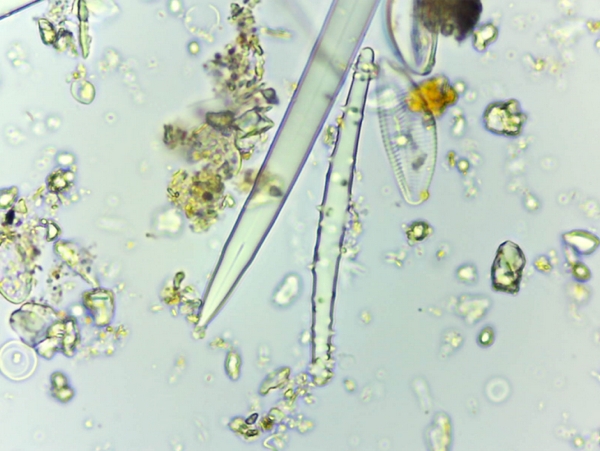Greg EplerWood reported that Rabbit Run, the section of a tiny not-quite-a-creek near Shillington named in honor of Updike’s second novel, has an uncommon resident: a yellow, freshwater sponge.
Last summer, Angelica Creek Watershed Association’s Jill and Stan Kemp sent an email to other members with news that they had discovered a strange yellow growth underneath one of the rocks. Suspecting it might be a seldom-seen freshwater sponge, they sent a sample to Carnegie Museum’s Marc Yergin, who studied it “Under the Microscope”—as Updike might have done. Yergin tentatively identified it as Eunapius fragilus.
Though Updike’s short story about microscopic life was a commentary on the New York literary scene, what the presence of a freshwater sponge in Rabbit Run means is that the association’s clean-up has already had a positive effect on the ecosystem.
“The presence of FW sponge indicates good water quality as they are extremely sensitive to any type of water pollution,” the Kemps wrote. “Sponges provide an important ecosystem service because they filter water all day, every day and help to clean things up like FW mussels or oysters in Chesapeake.”
The Kemps said they thought some of the improvements in the management of the riparian area might have helped this sponge to survive in Rabbit Run . . . a long, long ways from Bikini Bottom.
Photos are courtesy of the Kemps and Marc Yergin. The longish skeletal elements from the magnified sponge below are called “spicules.”


